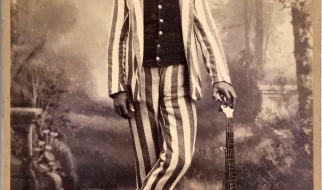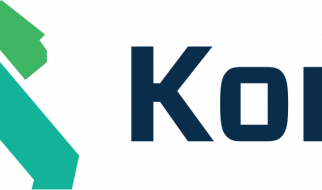What I?ve learned after two months of use

A little over two months ago I started wearing and collecting data via WHOOP. Here?s what I?ve learned in that time and why I plan to keep wearing it.
According to Gartner, shipments of wearables will reach 225 million in 2019 ? a 25.8% increase over 2018. And while smartwatches (think Apple Watch) make up the largest category of wearables, wristband devices come in a close second. Enter the WHOOP.
WHOOP is not your typical wristband. It?s a performance management system that includes hardware (the strap), software (a mobile and a web app), and a community. It doesn?t have a watch face (or a face of any kind), and it doesn?t track steps. What it does collect is 5 metrics 100x/second, 24 hours/day, 7 days/week in an effort to help you understand your body and unlock your performance potential. The system takes all of this data over days and weeks to determine how prepared you are for your optimal performance. More on what that means in a little bit.
Why did I join WHOOP?
I?ll be honest (because everyone is honest on the Internet) ? a big driver for me joining WHOOP was to have objective data to counter my wife?s claims that I wasn?t taking enough days off from exercise. Yup, that?s right, I wanted data to support my case. Mature of me, right? She grew (rightfully) tired of hearing me bitch about how much my shoulder hurt (an old AC joint separation from a cycling accident) or how much my hip ached (a labral tear from I don?t know what).
Though I?m generally blessed with good health, my body is starting to show its late-40s age, and I?m not doing it any favors. I played baseball for almost 18 years, much of it as a catcher, which means I squat my body weight many thousands of times a year (No, I?m not Pudge Rodriguez). Despite my advanced age, I still enjoy actively coaching my son and his teammates, which includes squatting, throwing, and hitting even still.
 Great game, bad hips. I have a coaching problem.
Great game, bad hips. I have a coaching problem.
And though I don?t run as much as I used to, I do ride my bike(s) over 5,000 miles a year. As if my wife needed more evidence, I exercised 338/365 days in 2017 and 337/348 so far in 2018 (at least that?s what Strava says). Maybe she has a point?
10 things I?ve learned from WHOOP, and why I?m keeping it
Google ?WHOOP? and you will see it described as ?The world?s most powerful fitness membership.? Technically you ?join? WHOOP. So what I mean by ?keep? is I plan to continue the membership, and here are 10 things I?ve learned that influenced this decision.
#1 ? It?s pronounced ?WOOP? not ?WHUP?
OK, I didn?t really learn this per se, but I needed a filler to get to 10 things I learned. And this gave me a chance to bust on my friend FasCat Frank. Seriously, check him out. He knows his stuff. Love you buddy!
#2 ? I don?t need a watch anymore
One of the first things I noticed when I put on my new WHOOP was ?Where the heck am I gonna put this thing?!?
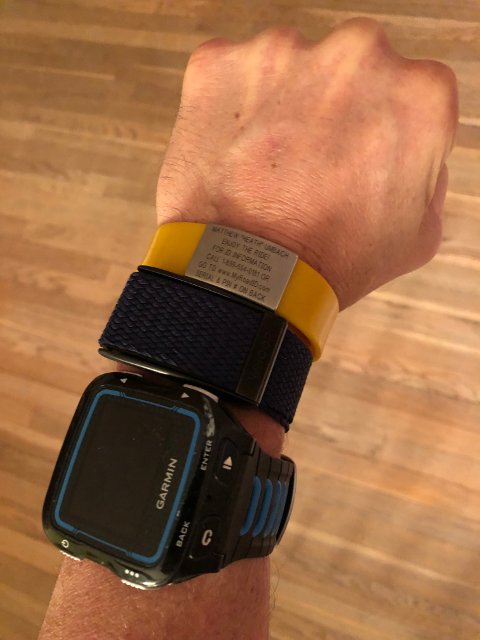 DC Rainmaker would be proud
DC Rainmaker would be proud
I already had a Garmin 920XT on my left wrist and a RoadID on my right. When I put the WHOOP on my right wrist, it sometimes flew open when throwing the football at my son?s youth football practice (did I mention I have a coaching problem? I was dropping dimes though).
The solution: The WHOOP strap has replaced my Garmin on the left wrist. I no longer wear a watch. I just glance at my iPhone if I need to know the time. I even find myself a bit less consumed by the time of day. On the less frequent occasion that I go for a run or swim laps, I just put my Garmin on my right wrist (awkward). And I?ve only once been asked ?what kind of watch is that you are wearing??
#3 ? I?m ready to go even when I?m not
WHOOP essentially tells me how I should be feeling. There are training days (and race days) when I woke up not feeling ready for my ?A game.? In the past I might have argued with myself or worse opted for the dreaded DNS (Did Not Start) on a race morning when I just didn?t feel up to it. But now I find myself agreeing with the WHOOP recovery score and using it to guide my effort.
WHOOP is essentially taking away my excuse (sigh).
Conversely, on days when I?ve slept a long time but a combination of factors yields a low recovery score, I find that I do in fact feel crappy notwithstanding the big sleep ? something that would have perplexed me before. And it?s something that I previously might have ignored and decided to do that difficult workout anyway rather than opt for more recovery.
#4 ? Performance is a wobbly 3-legged stool
Performance optimization isn?t just about tapering your training as you approach that A race or event. It?s not just about taking enough days off. You have to balance strain (your workouts AND daily activity) and recovery (more than just taking days off) with sleep (quantity AND quality).
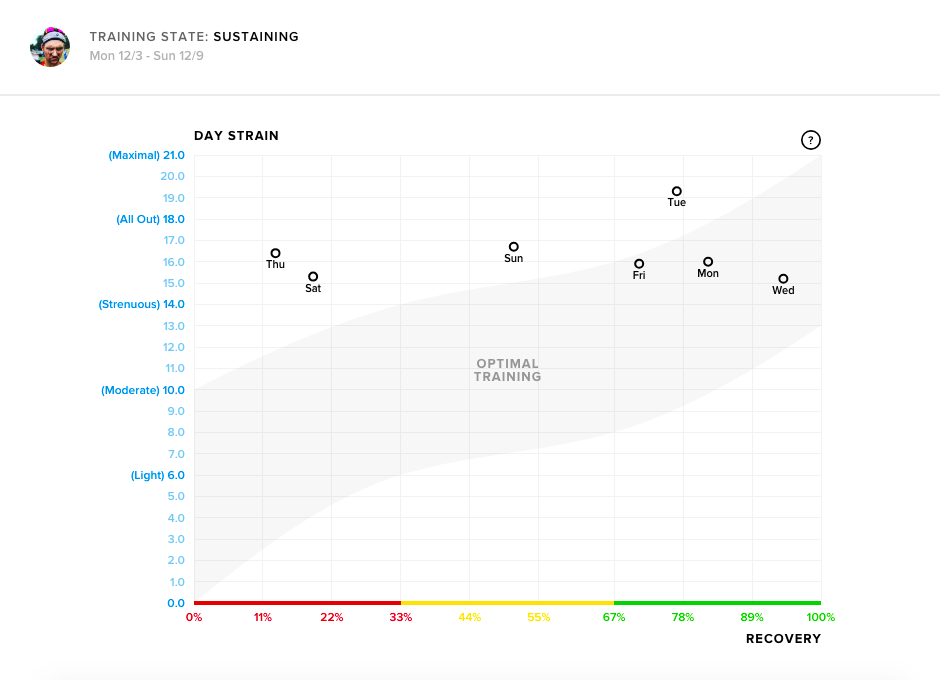 Strain, good. Recovery, bad.
Strain, good. Recovery, bad.
WHOOP Recovery captures Heart Rate Variability (HRV), Resting Heart Rate (RHR), and sleep performance to allow for more informed training.
What do I mean by sleep performance? WHOOP considers not just how much sleep I get (like most other sleep trackers), but also sleep quality (time spent in the various stages of light, REM, and Deep sleep) and consistency (how often I go to bed and wake up at the same time). Each of these can impact recovery.
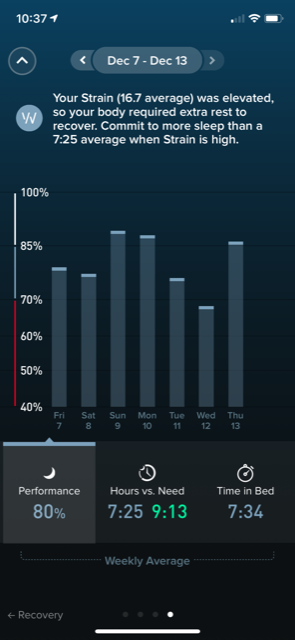
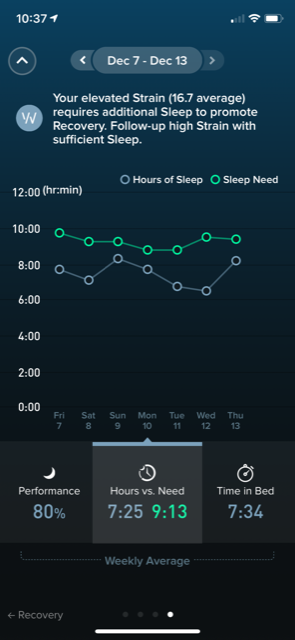
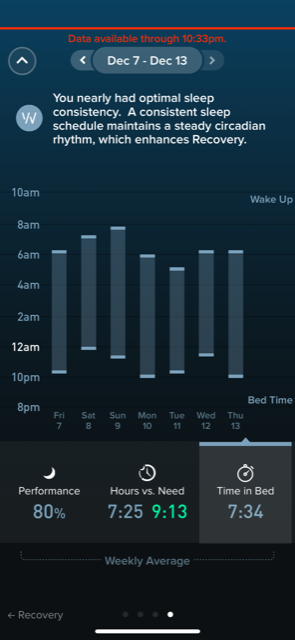 Sleep performance, hours vs. need, and consistency.
Sleep performance, hours vs. need, and consistency.
#5 ? Strain should be considered in context of daily life
It?s not just about the 1 hour of intervals I complete at 5:45am. I have a full day of potential strain ahead of me that factors into my Day Strain score. Whether it?s yard work, walking the dog, coaching youth wrestling practice (did I mention I have a coaching problem?), or just making it through the day, all of these things produce measurable strain.
 An average morning workout becomes an above average day of strain by dinner
An average morning workout becomes an above average day of strain by dinner
Since WHOOP is always on, every heartbeat counts. Data from the moment I wake until the moment I go to bed contributes to my overall Day Strain. This is important as it relates to recovery and the 3-legged stool. Simply taking the day off from training isn?t always enough to sufficiently recover. WHOOP quantifies when and the degree to which I?ve recovered every day, whether I?ve ?worked out? or not.
WHOOP is a tool for understanding how your body is responding to all the demands of daily life.
#6 ? I?m (slowly) replacing the screen with paper
This is more a behavioral change than a learning, but it took being asked by the app on a daily basis to make the switch.
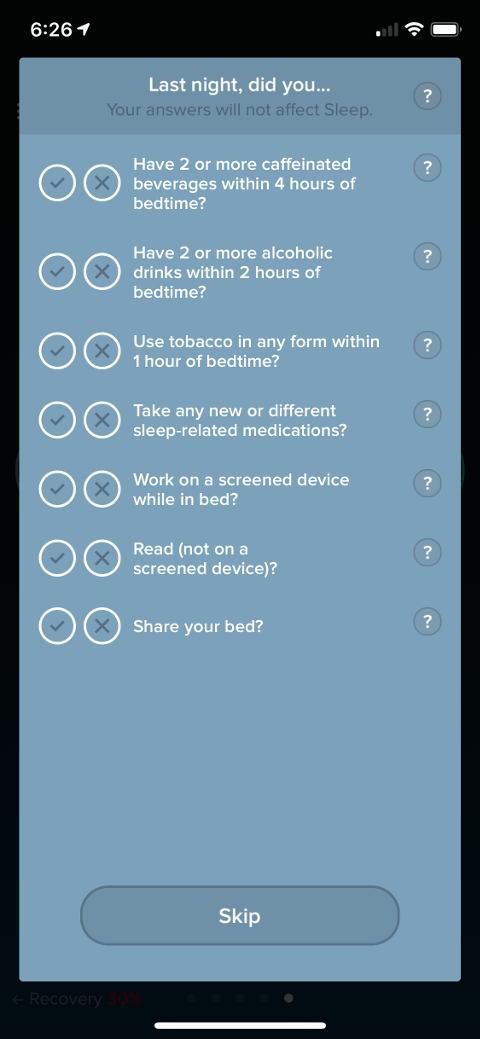 Daily User Input questions
Daily User Input questions
Each morning, WHOOP asks me a series of questions about what I did (or did not do) before going to bed. I know using a screened device in bed isn?t good for quality sleep ? the blue light emitted from screens has been shown to inhibit sleep patterns. But there?s just something about having to admit that to my WHOOP app every morning that influences my behavior. Pathetic? Or a pretty normal human response to being forced to provide data and receiving feedback?
#7 ? Holiday season is hard on recovery
OK, I think we all knew that the holiday season brings both cheer and challenges. But holy recovery yo-yo Batman!
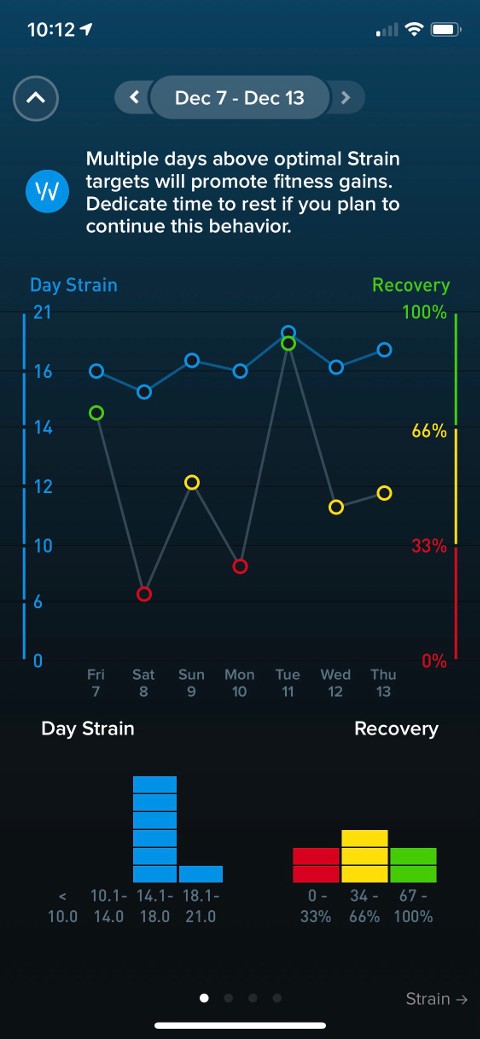 Too much eggnog? Ho, ho, ho!
Too much eggnog? Ho, ho, ho!
Other things like travel, work stress, illness, a fight with your spouse/partner or friend can impact HRV and thus recovery.
#8 ? Alcohol really impacts recovery
Related to the aforementioned holiday season, alcohol does impact recovery. According to the National Sleep Foundation, alcohol blocks REM sleep (as mentioned previously, WHOOP tracks individual sleep stages). This occurs because alcohol can activate a type of brain pattern not normally present during sleep known as alpha activity.
The closer to bed time one drinks, the more severe the effects.
Alcohol also impacts HRV, which is a key metric where the WHOOP recovery score is concerned. After only 4 months, WHOOP athletes report consuming alcohol 79% less often before bed. Need more evidence?
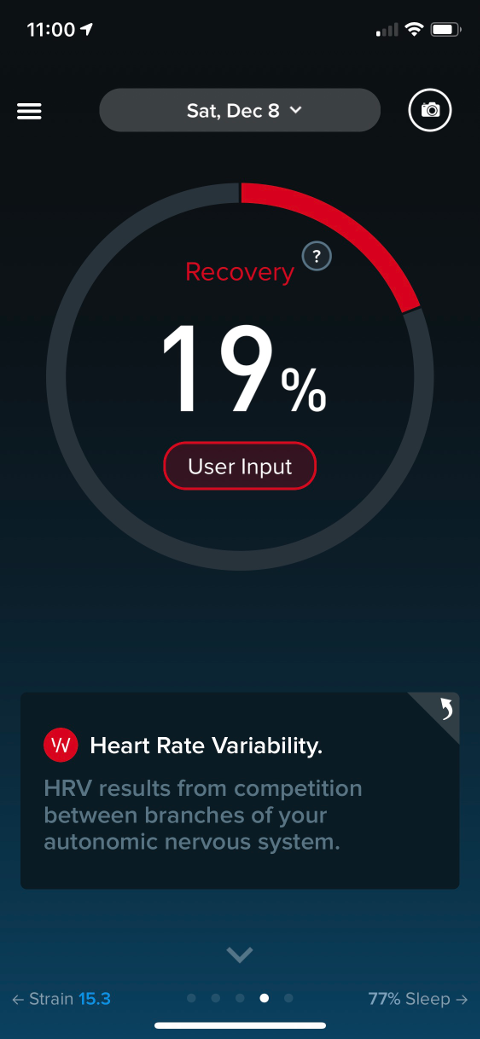 Great party. Terrible recovery.
Great party. Terrible recovery.
This is my recovery score on the morning after my wife?s company holiday party. I got over 7 hours of sleep that night, my second best sleep performance of the week. I fell asleep as soon as my head hit the pillow (I had 0:00 min of sleep latency ? the alcohol didn?t hurt there). But my sleep quality was very low (mostly light sleep and very little Deep or REM sleep).
How does WHOOP impact my alcohol consumption? In addition to providing objective data on the effects of alcohol on my recovery, WHOOP asks me every morning whether I had 2 or more drinks prior to going to bed. That sends a regular, powerful message that?s hard to ignore. Yes, I find myself thinking about the next morning?s User Input before I have that next drink. Yes, I?ve become a competitive sleeper. I just need to hang in there through New Year?s Eve. Fortunately cyclocross racing season is winding down too.
#9 ? Is WHOOP predicting (or even preventing) sickness?
Disclaimer: WHOOP is not claiming to predict, much less prevent sickness. But I and some of my WHOOP-wearing cycling teammates have reported a pattern with respect to WHOOP recovery scores before getting sick. In the days leading up to an onset of sickness, recovery scores seem to take a dip despite relatively solid sleep and low strain scores. WHOOP even telegraphed a migraine and a cold for one teammate.
What this means for me is I?ve begun to pay attention to poor recovery scores that present despite proper sleep and low strain. The few times this has happened I recall feeling a bit run down like one does when they feel like they are getting sick. Although admittedly flu season is not yet in full swing, so check back next spring I guess.
#10 ? My wife is generally right
OK, I didn?t need WHOOP to tell me that, but it?s still worth pointing this out and accepting it as the 10th thing I?ve learned after two months of WHOOP data.
Conclusion
So there you have it, 10 things I?ve learning in just two months of WHOOP experience. There?s still much to learn about what the system is telling me and how to optimize my performance with a combination of strain, recovery, and sleep, but I?m happy enough with the experience to keep going. Now if I can just figure out which combination of strain, sleep, and recovery guarantees a podium?!
Do you have a favorite device or method for optimizing performance? What works for you?

